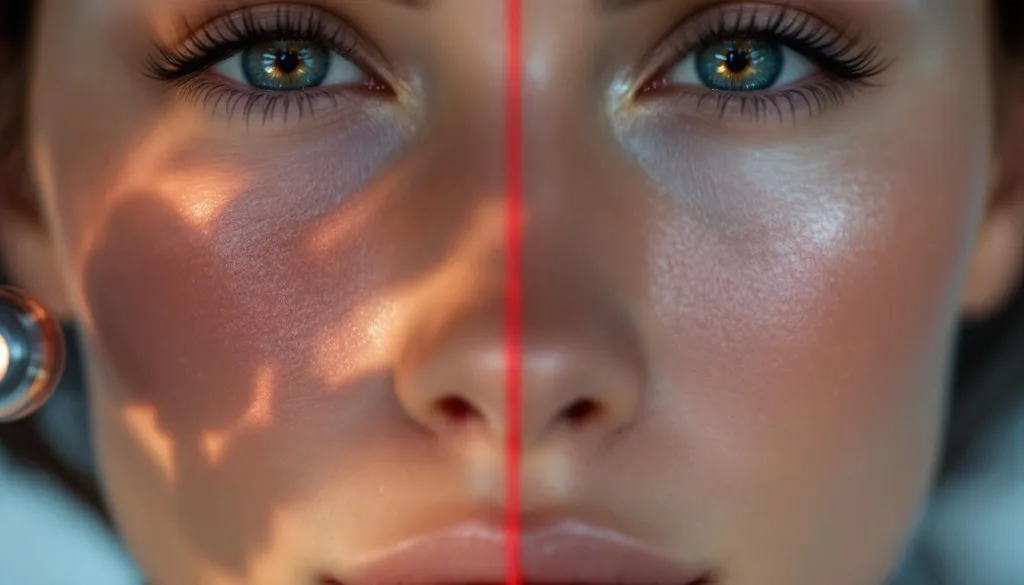Melasma Woes: Why Your Anti-Aging Treatments Might Be Making It Worse This Summer
As the scorching summer sun reaches its peak this July, many are searching for effective ways to maintain youthful skin. However, dermatologists are sounding a warning: the anti-aging treatments you’ve been eyeing could be exacerbating melasma instead of remedying it.
Understanding Melasma and Its Triggers
Melasma is characterized by stubborn brown patches that often affect the face. As temperatures rise, skincare professionals are becoming increasingly concerned that common anti-aging procedures may worsen melasma symptoms rather than alleviate them.
Dr. Heather Jenkins, a cosmetic physician, notes, “If you’ve been treating your melasma with laser or cosmetic procedures and noticed your pigmentation darkening or becoming more stubborn, you’re not alone.” The summer months can particularly amplify this issue.
The Heat-Melanin Connection
How does the heat from popular treatments impact melasma? The answer lies in the behavior of melasma itself. Heat-based treatments, such as radiofrequency microneedling and various laser therapies, stimulate melanocytes, the skin cells responsible for pigment production.
Dr. Rebecca Marcus, a dermatologist and melasma specialist, warns, “Anything involving heat should be used with extreme caution by those who have melasma. Heat stimulates melanocytes to produce melanin.”
This is particularly concerning during summer when UV exposure is already a threat, leading to conditions like post-inflammatory hyperpigmentation (PIH) which makes melasma notably harder to treat.
Treatments to Avoid This Summer
Several anti-aging treatments are known to pose risks for melasma sufferers:
- Nonablative Fractional Lasers
- Ablative Fractional Lasers
- Intense Pulsed Light (IPL) Treatments
- Q-Switched Laser Treatments
Dr. Shamban, a leading dermatologist, explains: “Most lasers and IPL are based on elective photothermolysis. However, an adverse basal layer inflammation can result in repigmentation and post-inflammatory hyperpigmentation.”
One patient recounted, “After my laser treatment, my melasma cleared for about a month, but then it came back even worse. I wish I’d known about this risk before spending so much money.” This unfortunate experience is more common than many realize.
Safer Summer Skincare Alternatives
Instead of resorting to heat-based treatments, consider gentler, evidence-based approaches suitable for the summer months. Options that minimize inflammation can be particularly beneficial:
- Targeted Masks for dark spots
- Gentle topical treatments that avoid disrupting the skin barrier
Dr. Jenkins emphasizes, “Disrupting the skin barrier through aggressive procedures leads to increased sensitivity and pigment retention.” This is especially problematic when combined with irritating makeup often used to cover melasma.
Essential Summer Protection Strategies
To manage melasma effectively during the hot months, experts recommend several key strategies:
- Daily Sun Protection: Always use broad-spectrum SPF 30+
- Wear Wide-Brimmed Hats and seek shade during peak sun hours
- Incorporate Topical Tyrosinase Inhibitors like hydroquinone
- Consider Oral Tranexamic Acid under medical supervision
Combination therapy often yields the best results, but it’s essential to be aware of the increased risk of adverse effects that can accompany it.
The Future of Melasma Treatment
Not all advancements in technology are detrimental. Picosecond lasers show promising results with fewer side effects but should still be used carefully. Many patients also find success with cooling treatments that help reduce inflammation.
Be cautious of skincare and makeup products containing pigments that could aggravate melasma management.
“Like an unwelcome summer storm, melasma can darken suddenly when provoked by the wrong treatment,” warns dermatologists. The skin’s pigment cells react quickly to heat, leading to an uptick in melanin production.
Is There Hope for Your Summer Skin?
Absolutely! “Addressing recurrence and improving treatment personalization are key areas for future melasma management,” states a researcher focused on emerging therapies. With the right knowledge and medical guidance, managing stubborn melasma effectively—even in the face of heat-intensive treatments—is possible.
Navigating your summer skincare may require patience, but with informed choices, melasma can be tamed. Embrace strategies that prioritize your skin’s health and avoid counterproductive heat that many anti-aging treatments introduce.
Further Reading:
- Explore Melasma Treatments to learn more about your options.
- Find out about Sun Protection Strategies to safeguard your skin this summer.


